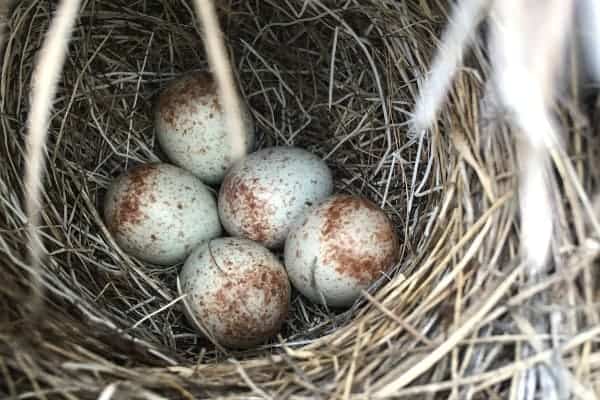We’re getting ready for winter and so are the birds. They’re chirping and feeding everywhere and the sky is alive with flocks of all kinds.
It’s so busy one of Yukon’s most avid birders, Tracey Allard, says fall can seem like spring for a few weeks.
“There are so many sparrows and warblers and you’ll see raptors, like hawks, chasing them.”
There’s also a kind of friendliness among fall birds.
Family groups and different types of species like warblers can be mixed up, hanging out and feeding together, notes Yukon College instructor Dr. Katie Aitken.
But all good things must end.
Most of Yukon’s migratory summer species leave by the end of October headed for Mexico, Central and South America.
They fly at night and forage during the day.
Aitken says that while many species take a bee-line route, geo-locators have shown that other species, like short-eared owls, take a meandering path south.
Some birds, like American robins, opt for closer destinations in southern Canada and the northern United States, while a few braver individuals may just stay, as recent winters have shown.
Like leaves, large flocks of birds will sometimes fall-out during migration in rainy or windy weather, resting briefly before flying off. Occasionally rarer species will show up, like the Eurasian collared-dove, a recent newcomer to bird watcher Ione Christensen’s Riverdale yard.
If you have a feeder, or want to install one, now is the time to get it ready. Most winter-feeder birds – chickadees, nuthatches and pine grosbeaks – enjoy sunflower seeds. Christensen buys the de-husked seeds to reduce waste.
Load up your feeder when it’s clean and dry. Consider cleaning it with a 10 per cent bleach cleaning solution especially for feeders fouled by lots of birds and fall’s damp, wet weather.
Consider a location that will help prevent bird strikes (see below) and keep cats away, says Aitken, warning that cat owners can be in denial about kitty’s killer instinct.
“If you keep your cat outdoors and you’re putting out a bird feeder, you’re just setting up an all-you-can-eat-buffet for the cat,” she says.
If you do have bird strikes and find a stunned bird some experts say taking it indoors can help it recover. Aitken says moving such birds can stress them and won’t help survival.
She adds that if you do find a dead bird, drop it off at Environment Yukon or Environment Canada offices and it will be used for teaching and research at the Yukon College.
You can learn more about fall birds this year through the Yukon Bird Club’s free events. The next one is a presentation called Birds of Fall, by Ione Christensen, and takes place Thursday, Sept. 15 from 7 p.m. to 8 p.m. at the MacBride Museum of Yukon History.
The Loon Migration Spectacular is the next Yukon Bird Club field trip and takes place at Marsh Lake on Saturday, Oct. 8 from 10 a.m. to 2 p.m. Meet at the S.S. Klondike at 10 a.m.
And don’t forget, the Teslin Bird Banding Observatory is open until Monday, Oct. 10.
Happy birding!
How to Stop Birds Hitting Windows
Along with cats, window collisions cause “massive” bird mortality, says bird expert Katie Aiken. When a flying bird sees a forest reflection in your window the result can be fatal. With lots of birds on the move this season – including inexperienced juveniles – here’s a few tips to prevent window-strikes.
Place your feeder within a metre of the window, or more than 10 metres away.
Instead of hawk decals (which don’t work) try shiny CDs, flagging tape or ribbon in front of the window outside.
For a longer term solution, consider purchasing UV-reflecting decals; they’re clear-coloured but the birds can see them. Check out www.windowalert.com or Wild Birds Unlimited at www.wbu.com.
Close blinds on any opposite windows so birds don’t see a flying route.
Check out www.flap.org which has a ton of related resources and information.




